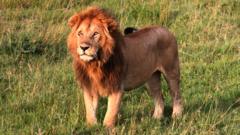Raccoons may be inching closer to becoming America's next pet.
Affectionately referred to as trash pandas, the masked mammals known for rummaging rubbish bins for easy food, are evolving based on their proximity to humans, even starting to look cuter, a new study says.
Evaluation of nearly 20,000 photos found a clear reduction in snout length in urban raccoons compared to their rural cousins - a physical shift consistent with the early stages of domestication seen in cats and dogs.
Some that have been adopted as pets have become TikTok celebrities. One particularly bold dumpster-diver even sprinted across the pitch during a Major League Soccer match in Philadelphia last year.
The stripe-tailed mammals, also nicknamed backyard bandits, are widespread across the contiguous US.
The proximity to humans could signal that the creatures are growing more comfortable around us, or, scientifically speaking, dampening their innate flight responses, according to the study published in the journal Frontiers in Zoology.
The softening of their features could be due to shifts in their fight-or-flight response on the cellular level, it says.
This urban domestication starts with trash, the study's co-author, Raffaela Lesch of the University of Arkansas at Little Rock, told Scientific American.
Trash is really the kickstarter, she said. Wherever humans go, there's trash — and animals love our trash.
However, to thrive, wildlife must balance being bold enough to navigate human environments without posing a threat.
If you have an animal that lives close to humans, you have to be well-behaved enough, Lesch said. That selection pressure is quite intense.
The findings align with the concept of domestication syndrome phenotype that features anatomical changes seen in domestic pets.
The study also hypothesizes that the domestication process may start earlier than understood, as animals habituate to human presence.
Only animals with dampened flight (or fight) responses would succeed best, the authors noted.





















